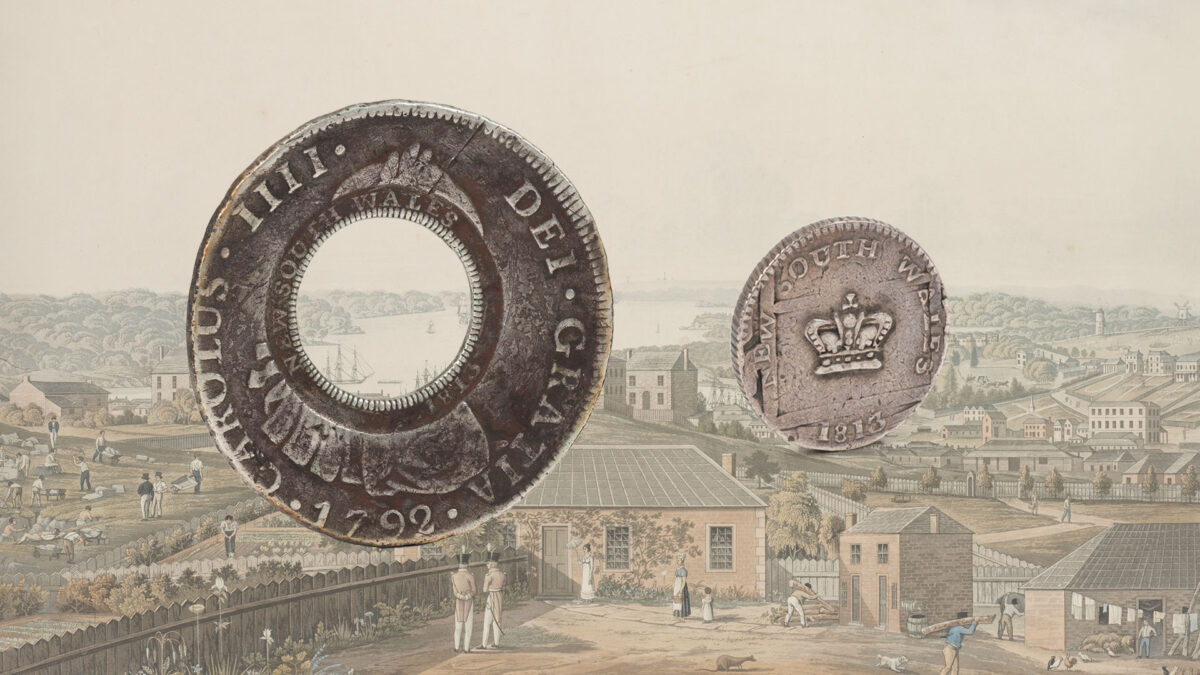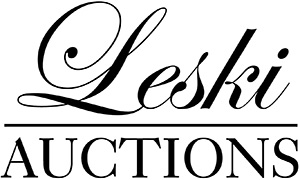
THE HOLEY DOLLARS AND DUMPS of New South Wales
THE FASCINATION WITH HOLEY DOLLARS AND DUMPS OF NEW SOUTH WALES:
The creation of Holey Dollars in 1813, at the instigation of the Governor, Lachlan Macquarie, for use in the Colony of New South Wales, was historically unique in multiple ways.
The Colony was initially used by Britain to rid itself of an uncontrollable increase in criminals, filling the gaols and prison hulks, all within a backdrop of the loss of the Americas under King George III, who opposed the Colony having its own currency. Before 1813, the Colony accepted any currency brought there by visiting traders, sailors and settlers. Military control in the Colony was vested in the New South Wales Corp, which was corrupt. Rum was traded as a “currency.”
“The net result was [social and financial] chaos:” [Philip Spalding “The World of the Holey Dollar” per Forward; First Edition 1973]. As Spalding further observed “There is a marked parallel between the early history of the currency of the senior Australian Colony and that of the Plantations in the New World; and by some strange quirk, the first silver Colonial issues of America were valued in “shillings” and “pence; whereas, the first silver coins of New South Wales were the Holey Dollars of 1813” [Forward Page xiv].
The Governor sought to break the Corp’s power by obtaining the approval of the Parliament of Britain to issue special currency: The result was the Holey Dollar [also called “Ring Dollars” in Official Despatches, and as “Holed Dollars” in such newspapers as the Australian, The Colonial Times and The Sydney Monitor] and Dump [better known then as a “Quarter Dollar”], as the first gazetted and minted coinage for the land that became “Australia.”
No two Holey Dollars are perfectly identical. This is otherwise unknown in the striking of official government approved currency elsewhere in the world. Governor Macquarie emulated the Administrators of the West Indies and the traders in Prince Edward Island, Canada, by having a circular disc punched out from the centre of each Reale coin and counter stamped the outer ring and centre with relevance solely to the Colony.
The English Government purchased 40,000 Spanish 8 Reale silver coins, which were an international medium of exchange, for £10,000, from the East India Company, Madras, India. They arrived in the Colony, aboard the unseaworthy HMS Samarang, on 26 November, 1812. The Holey Dollar, namely the outer ring, was valued at five shillings, while the inner centre, the Dump, was valued at fifteen pence. Spain had various Mints for producing the Reale, comprising of mined silver, in Madrid and Seville [“Continental” Holey Dollars], Mexico, Lima in Peru, Potosi in Bolivia [which, from the sixteenth century, was regarded as the largest industrial complex for mining silver] and Guatemala.
Another amazing fact, was the fact that Governor Macquarie appointed a former currency forger, but who, by then, was an emancipated convict, William Henshall, to engrave the dies and construct the coin press. Henshall, who had been a metal engraver and cutter in England, was transported to the Colony as a forger. In total, 39,910 Holey Dollars, and an equivalent number of Dumps, were produced out of a total of 40,000 planchets [a metal disc from which a coin is struck]. Eighty-nine were too badly damaged, during trials, to go into circulation. The Governor wrote in dispatches to London that there was “difficulty of making the Machine….for cutting and stamping the Dollars in the manner proposed and it [i.e.. the Machine] failing more than once afterwards…”
In 1822, Governor Brisbane recalled the Dollars and Dumps by Proclamation, and re-issued them in 1823. Out of 39,910 issued Holey Dollars, 34,058 were redeemed [“Colonial Secretary-in Letters” Bundle 17 No. 8 Mitchell Library: q.v. “The Holey Dollars of New South Wales-their fate” by Dr W J Mira and published by The Metropolitan Coin Club of Sydney 1979 Page 7].
The coinage was finally withdrawn in 1829. It is believed that about 300 Holey Dollars and 1000 Dumps have survived. As at June, 2016, the census of privately held Holey Dollars amounted to 176, while the figure of 200 is applied colloquially. The Royal Australian Mint, Canberra, the Reserve Bank of Australia Museum at Martin Place, Sydney, the National Gallery of Victoria, Yale University, USA, the Mint & Barracks Museum and the National Museum of Australia hold single examples of the Holey Dollar each, while the example held by the State Library of New South Wales was stolen in 2012, and has not been recovered to date. At the time of the theft, the NSW State Librarian and the Library’s CEO, Dr. Alex Byrne, said “Historically the Holey Dollar is extraordinarily important. It’s about this country developing all aspects of a civilised society.”
Since 1968, the Holey Dollar is the global symbol of the Macquarie Group, including the Macquarie Bank, which sponsored a display of Holey Dollars and Dumps in 2013 for the Bicentenary in the Banking Chamber, No. 1 Martin Place, Sydney. Three coins from the present collection, were featured in that Exhibition, described as “the largest and most valuable collection of Holey Dollars ever assembled for public viewing” [“The Holey Dollar: a Symbol of Innovation” by Coinworks, 2013 on the occasion of the Macquarie Group sponsored Holey Dollar Bicentennial Exhibition, 2-18 October, 2013: Introduction]. The Royal Australian Mint, with Coinworks, held an Exhibition in Canberra “All that is Holey; The First Minted Coins of Australia” 16 August, 2019 to 3 November, 2019. Coinworks’ research and marketing of these remarkable coins is acknowledged.
Every single Holey Dollar and Dump is rare, unique and represents an inspirational Colonial Governor’s strength of will in setting the Colony in the direction of a financially stable future Nation. Holey Dollars and Dumps continue to enjoy incalculable significance, and lay at the core of the independent foundation, and stability, of the modern complex financial entity which is the Commonwealth of Australia.
We acknowledge the seminal research work published by W. J. D. Mira and W. J. Noble “The Holey Dollars of New South Wales, A pictorial record of known surviving Specimens” as at 1988: ISBN: 0 9590796 1 0. Sydney.
Leski Auctions are proud to be creating another chapter in the story, in the 210th year since these coins were created. We are delighted to have been selected to present this remarkable collection for sale to numismatists, collectors, curators and investors, in Australia and around the world.
